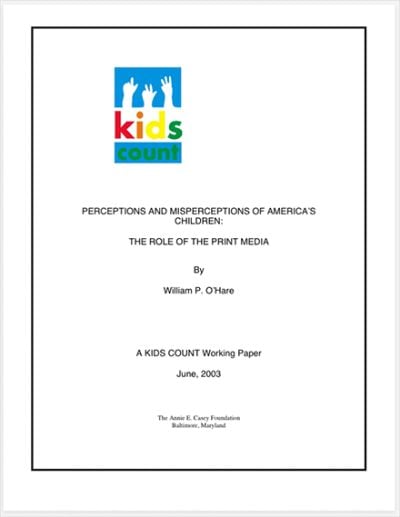Misperception No. 1
Only 19% of Americans surveyed knew that the number of kids on welfare declined since 1996.

This paper is closely linked to a report identifying several misperceptions that Americans have about children and youth.
In the report, researchers explored survey topics on several important social policy issues rooted in indisputable statistical data. These issues were related to: 1) welfare reform; 2) immigrants; 3) single parents and single mothers; 4) teenage births; and 5) out-of-wedlock births.
For this publication, researchers scanned content from five large newspapers — Washington Post, New York Times, Los Angeles Times, Atlanta Journal and Constitution, and the Chicago Tribune — to see if the misperceptions held by Americans are linked to the way the press portrays key issues on child well-being.
This review identified 494 pertinent articles published between September 2001 to September 2002. As points of comparison: The five outlets collectively published 5,258 articles on unemployment and 6,732 articles on the stock market during this same time period.
Survey results indicated that:
This publication is part of the KIDS COUNT Working Paper series, which elevates discussions about data gaps, results and trends related to the KIDS COUNT database.
Much of the increased interest in statistics on child well-being can be traced back to 1990 when the Annie E. Casey Foundation first began publishing its annual KIDS COUNT® Data Book. This publication was the first of its kind — making statistical data on children easily available to large numbers of people. It was widely disseminated, highly valued and quickly became a model for other organizations. The product’s appeal is clear: Media carried information from the 2002 report to more than 70 million readers, listeners, and viewers, according to a recent analysis.
We hope you'll find value in this report. We’d love to get a little information from you, which we'll use to notify you about relevant new resources.